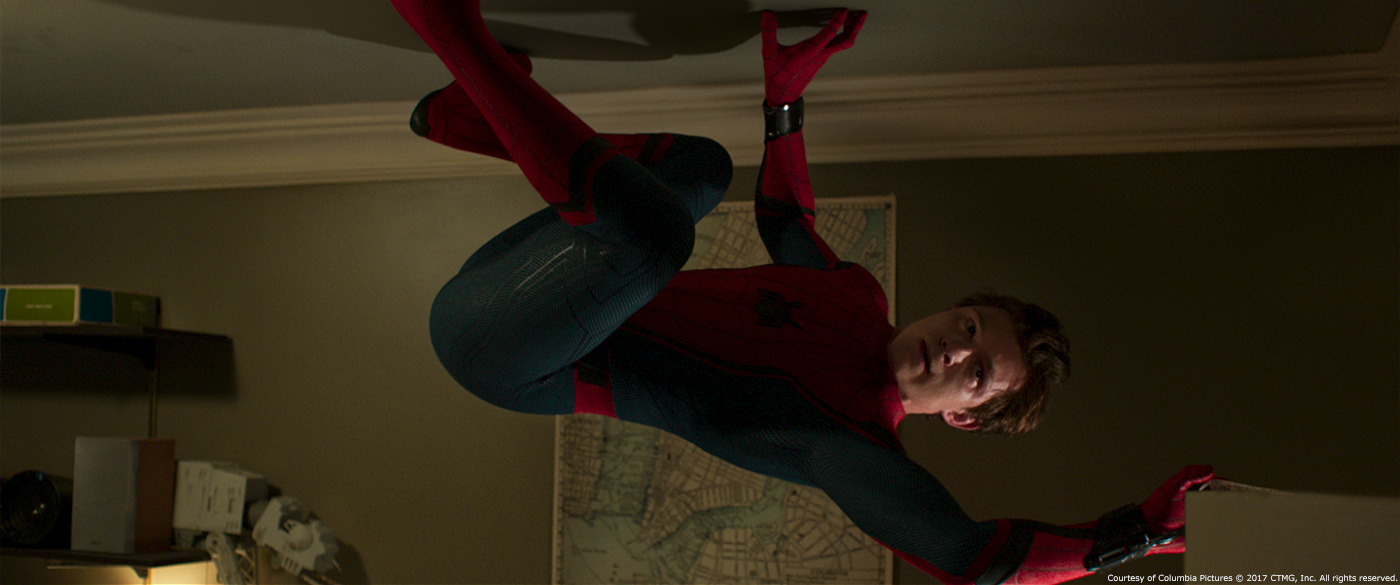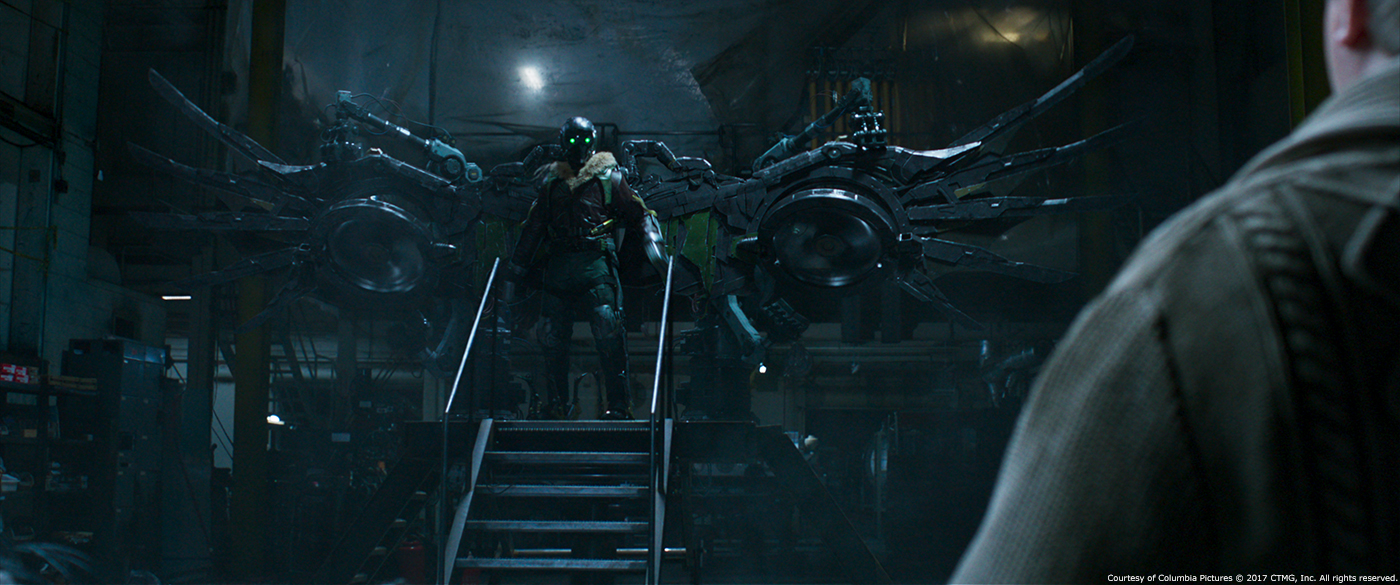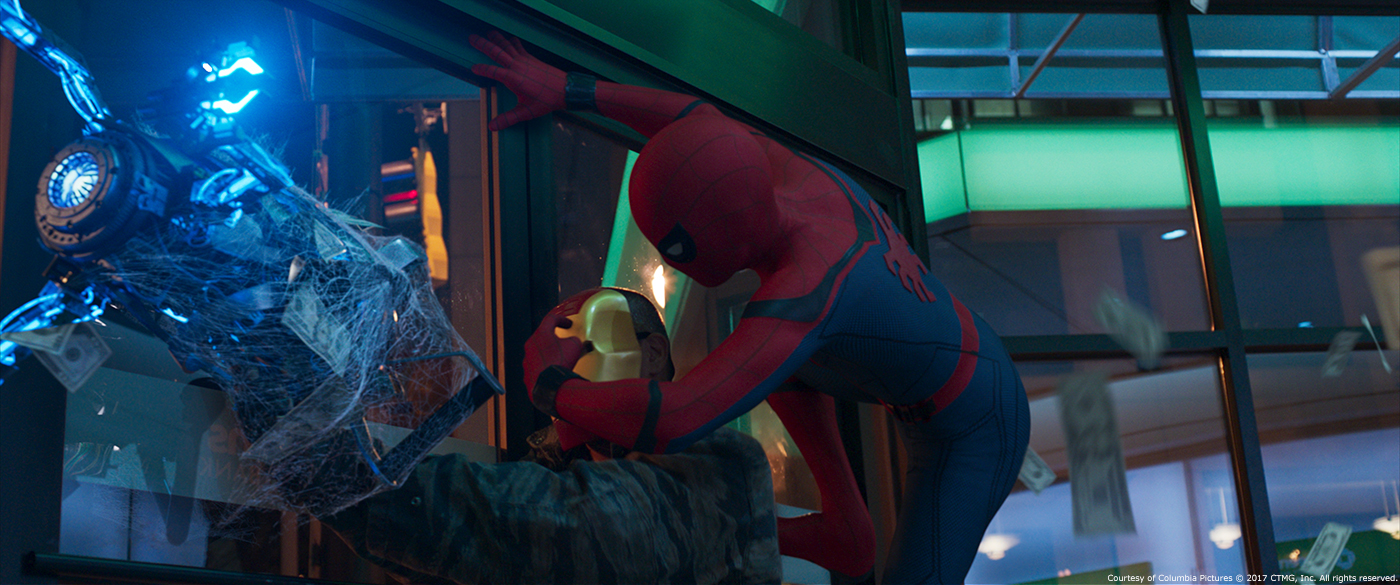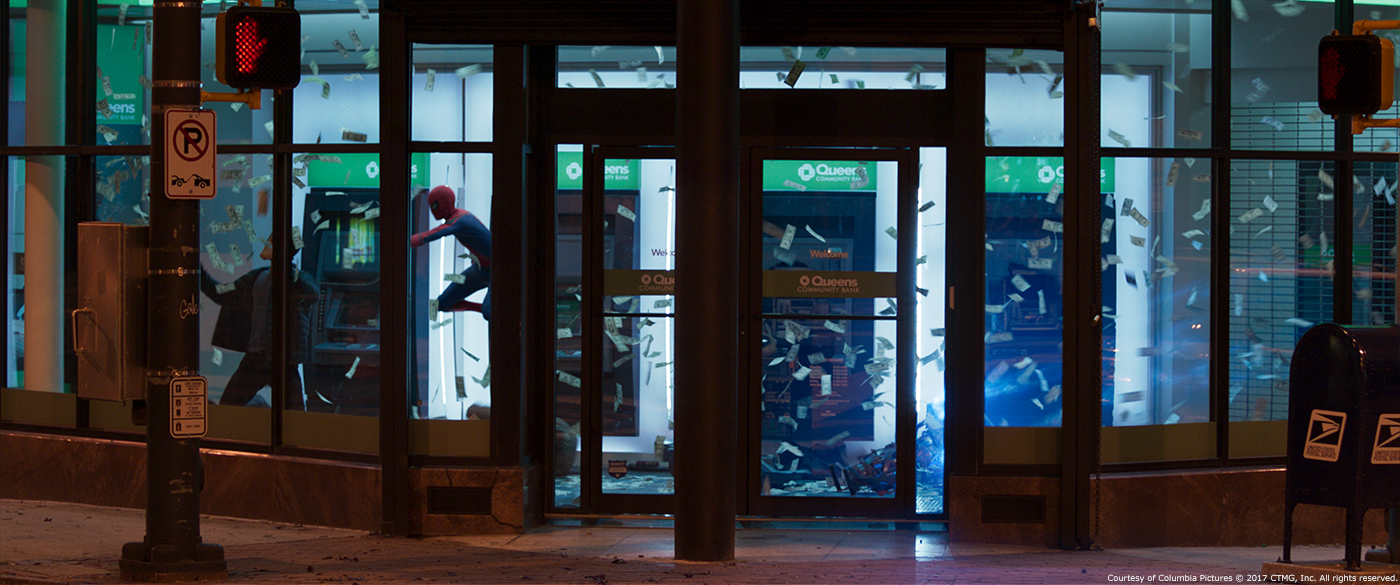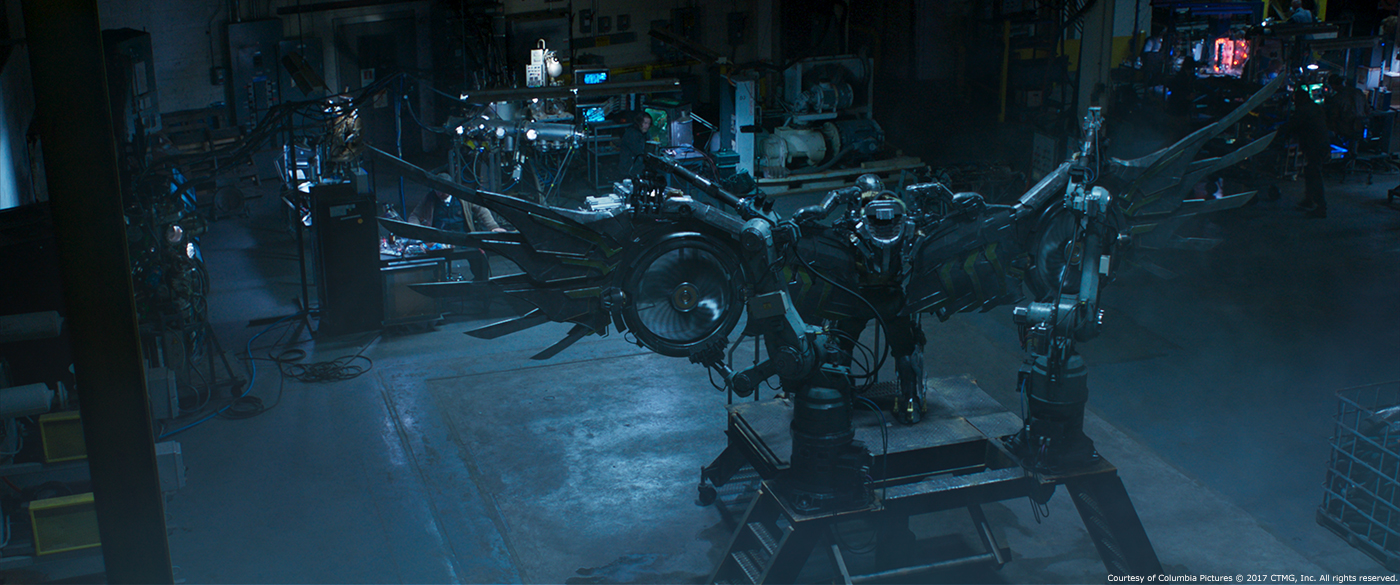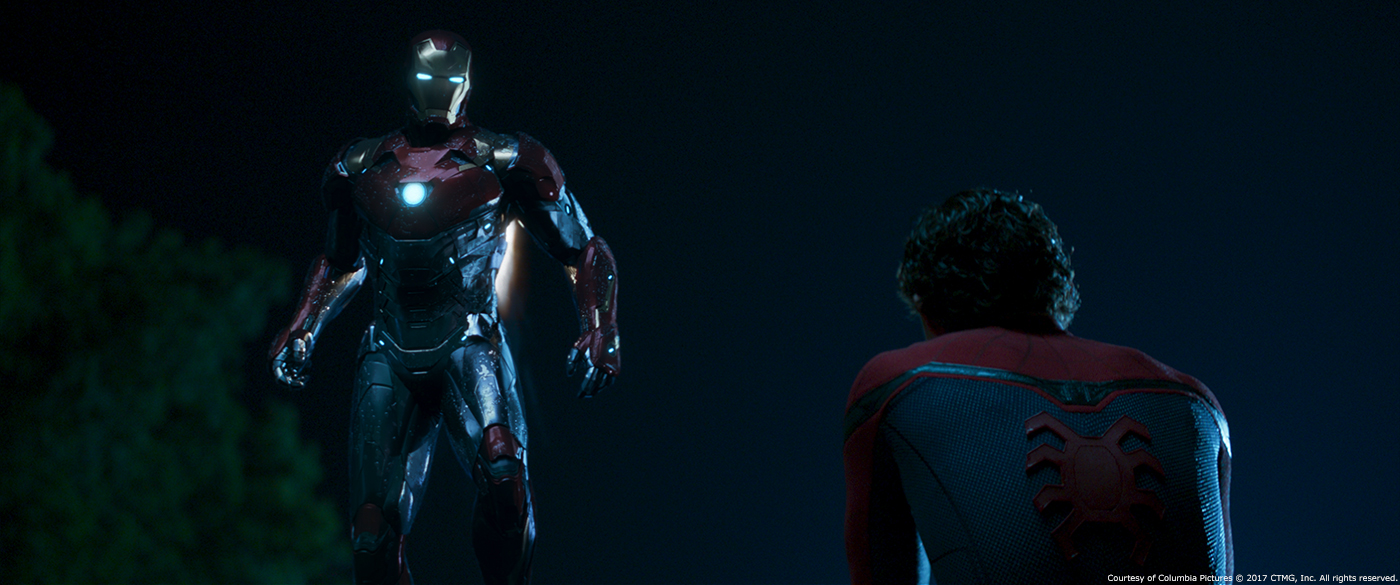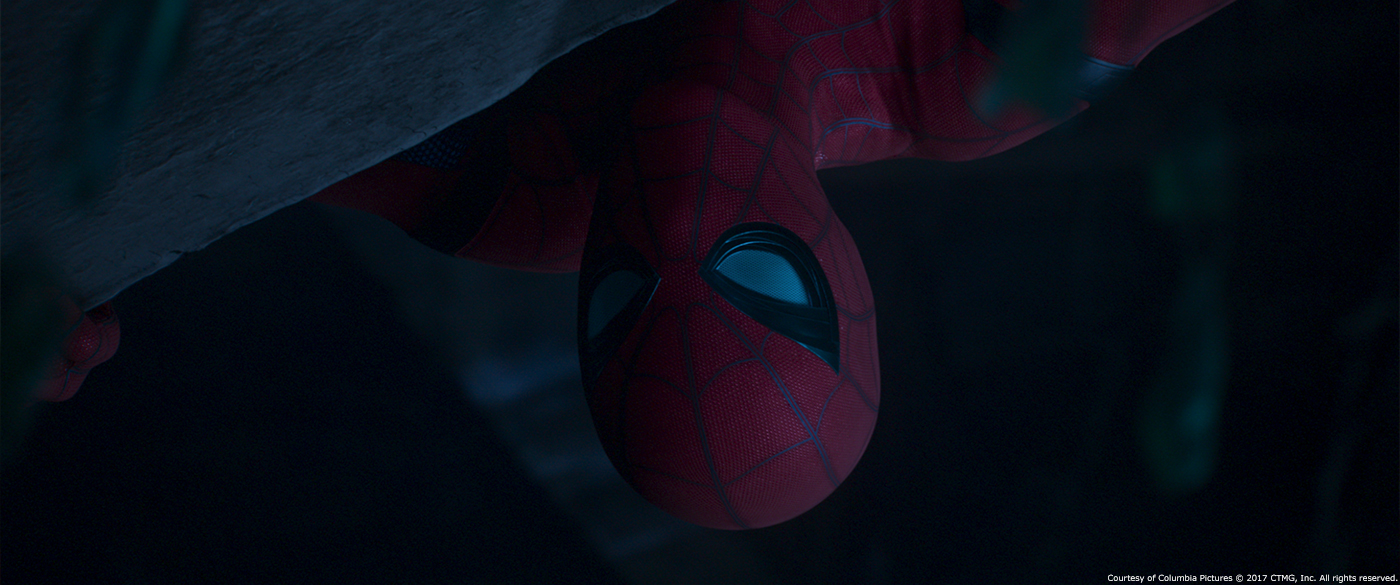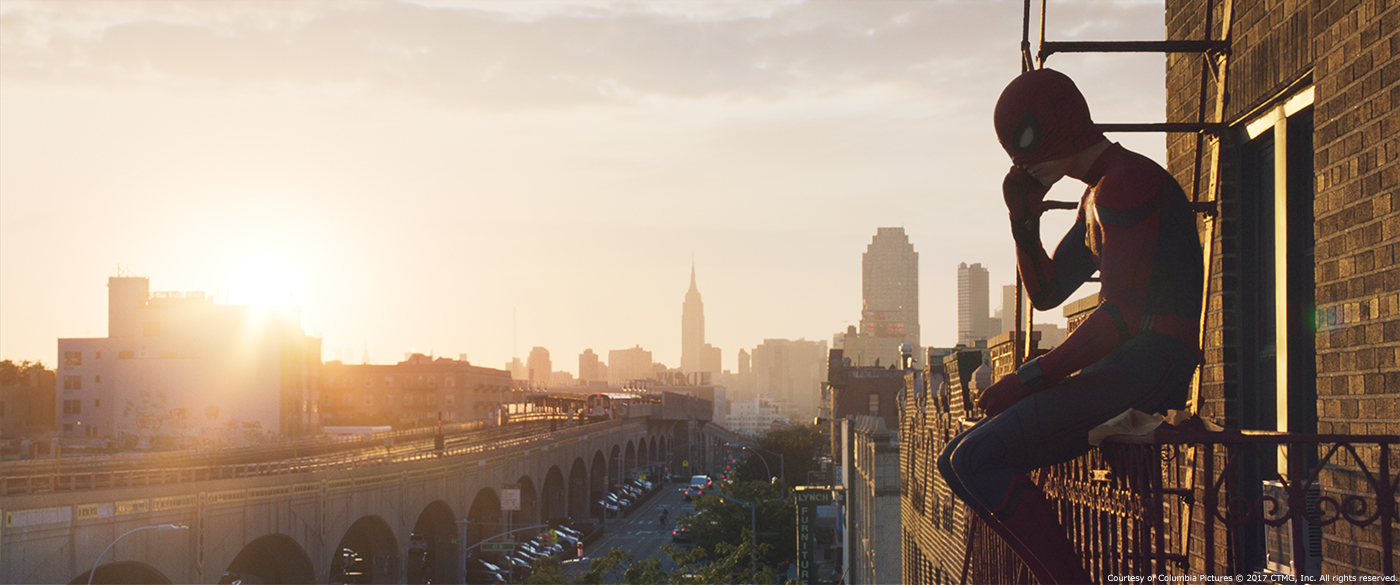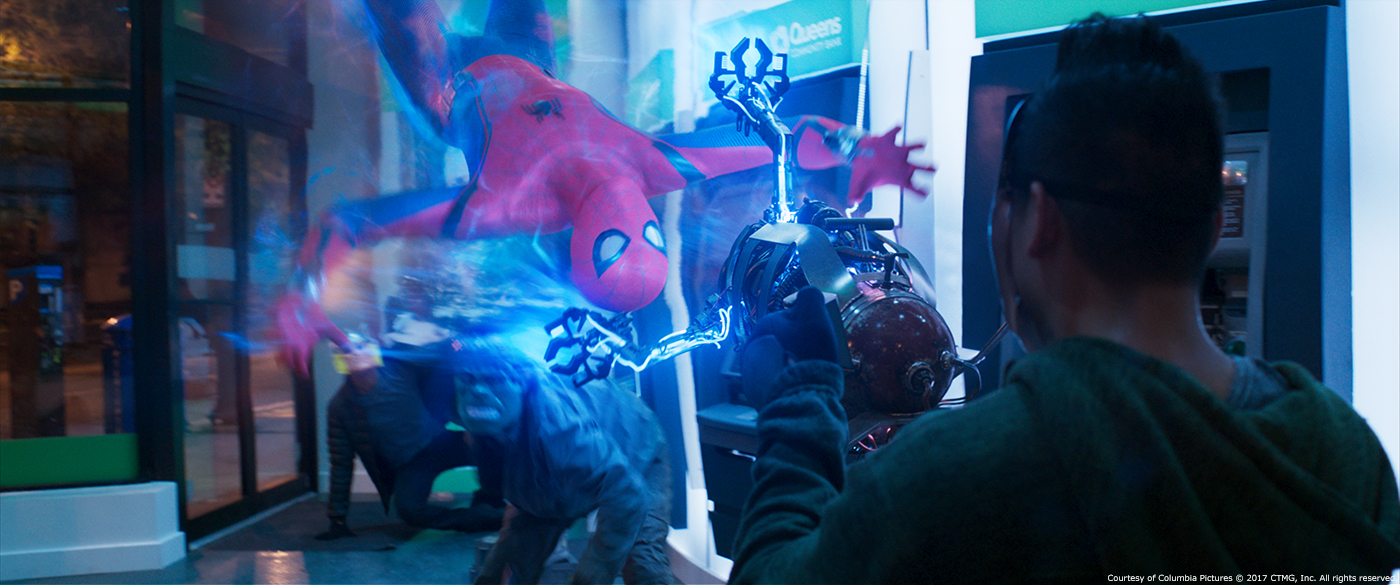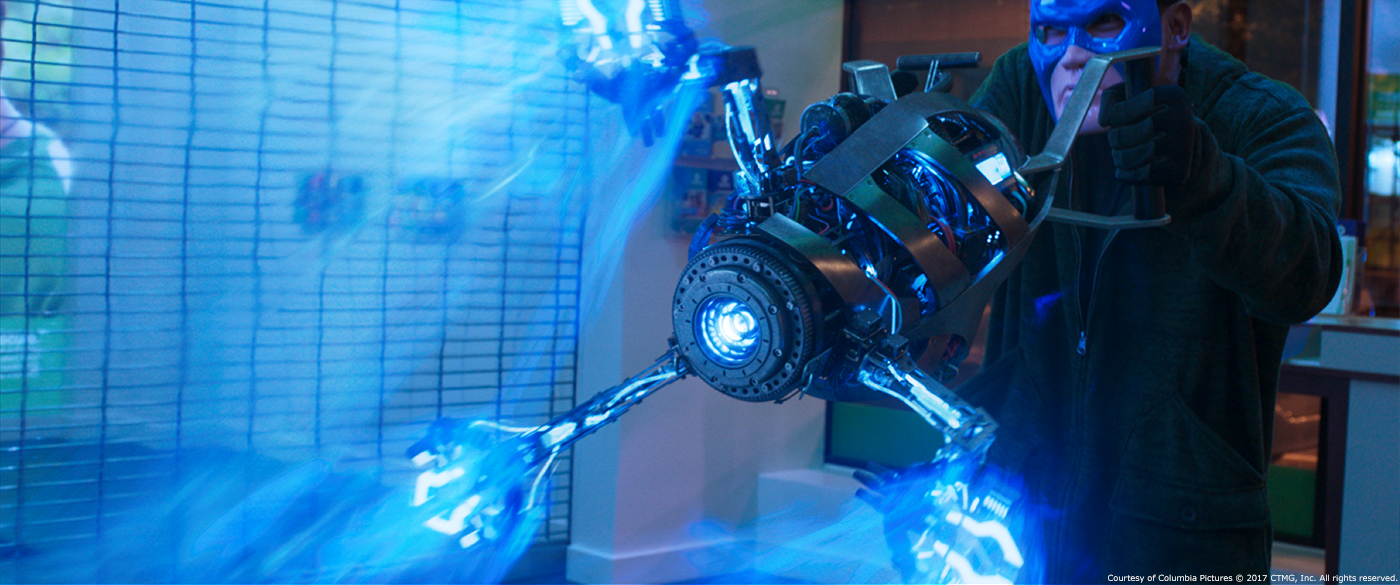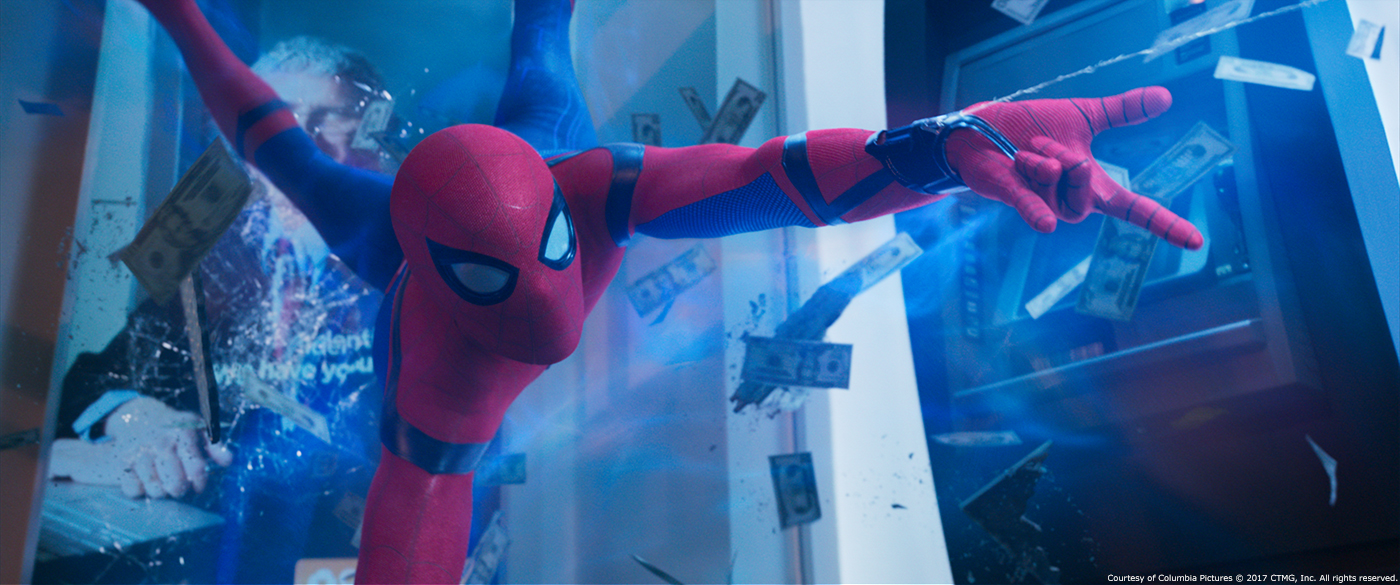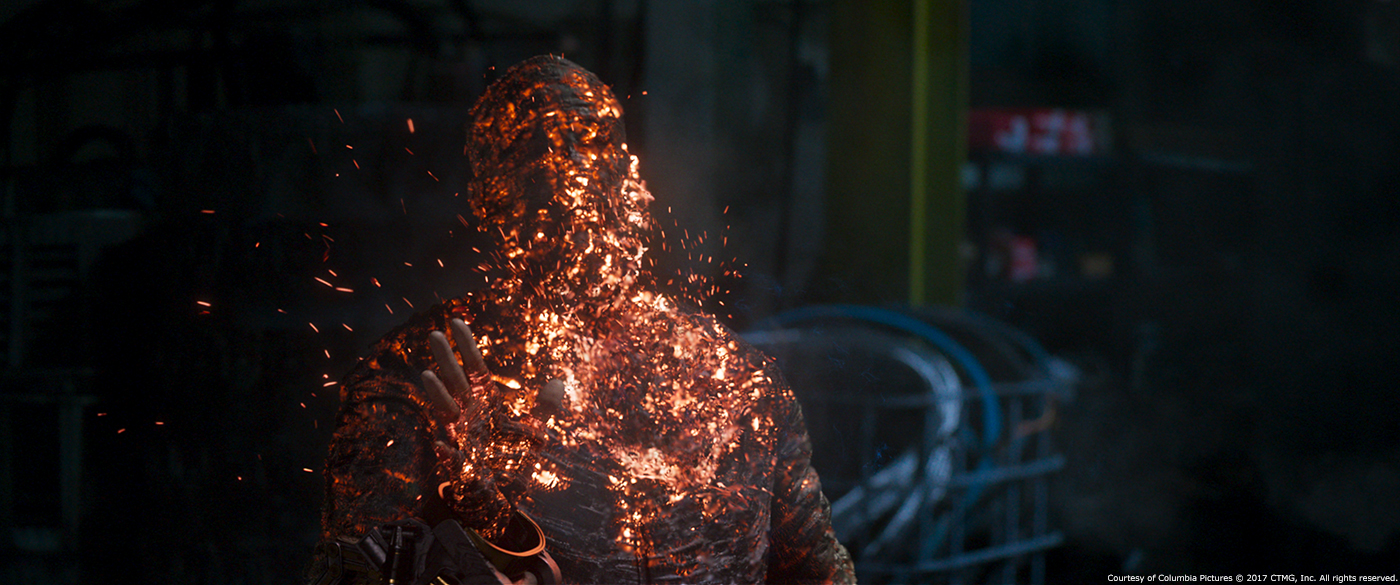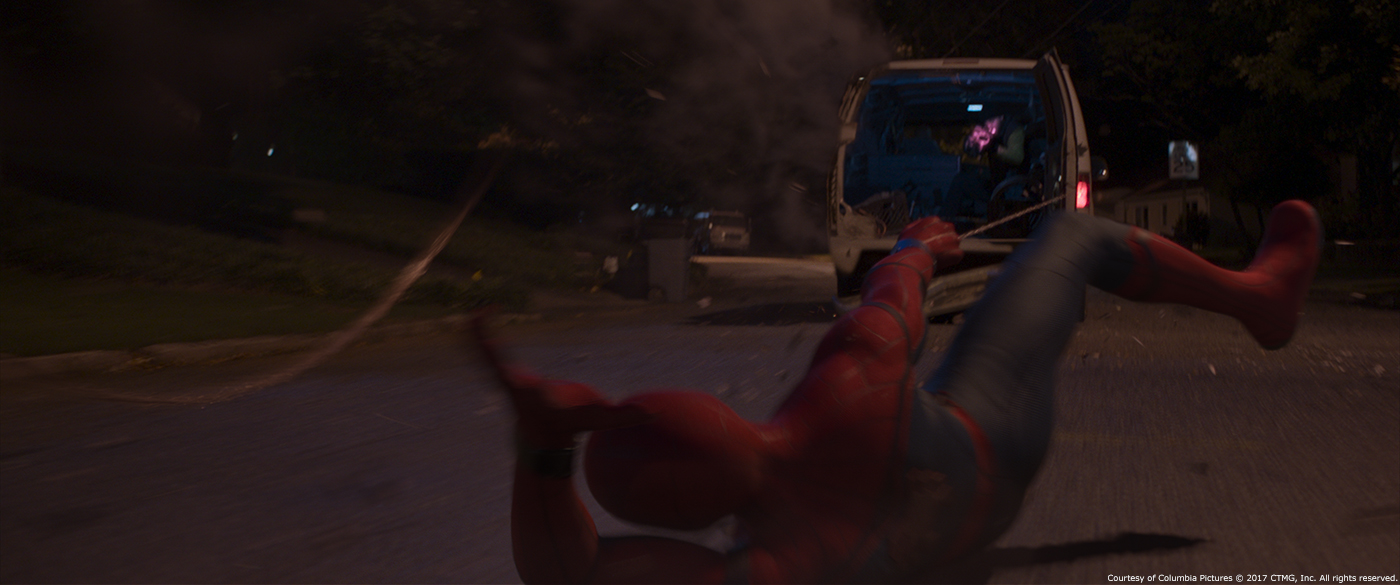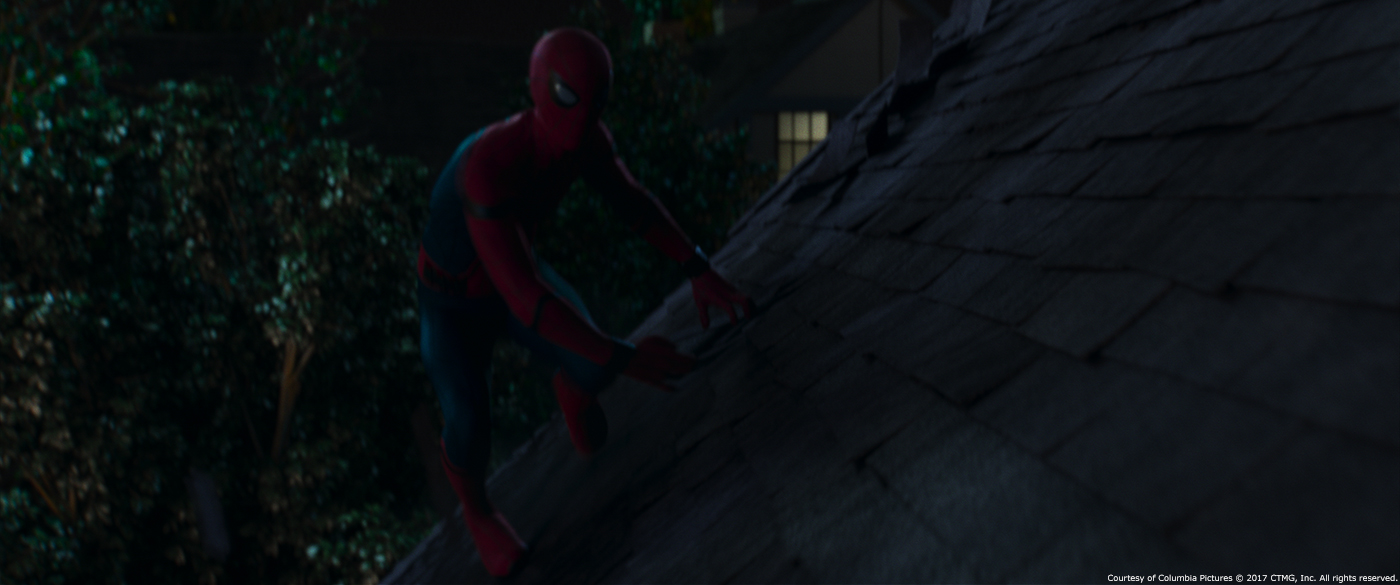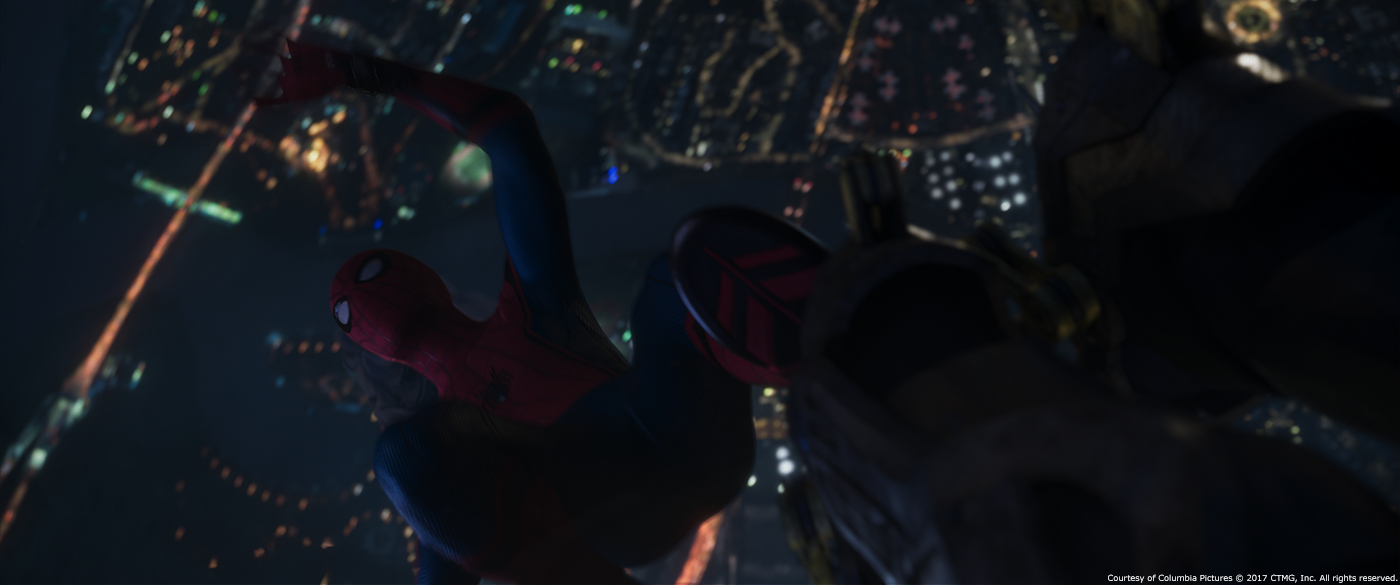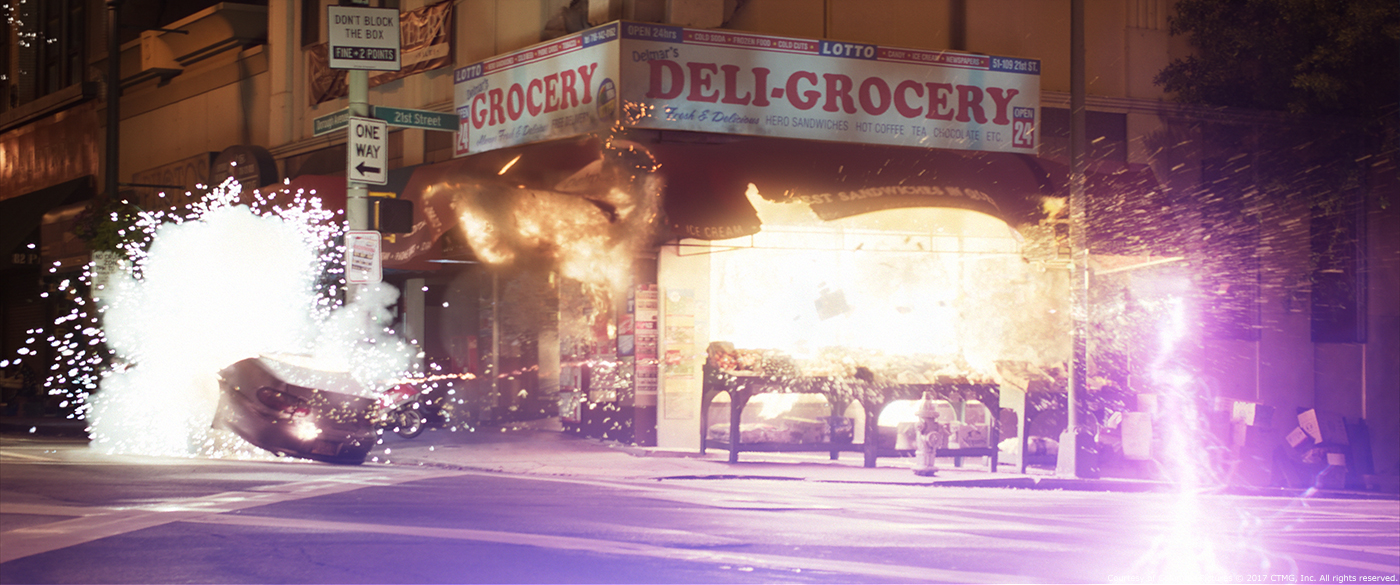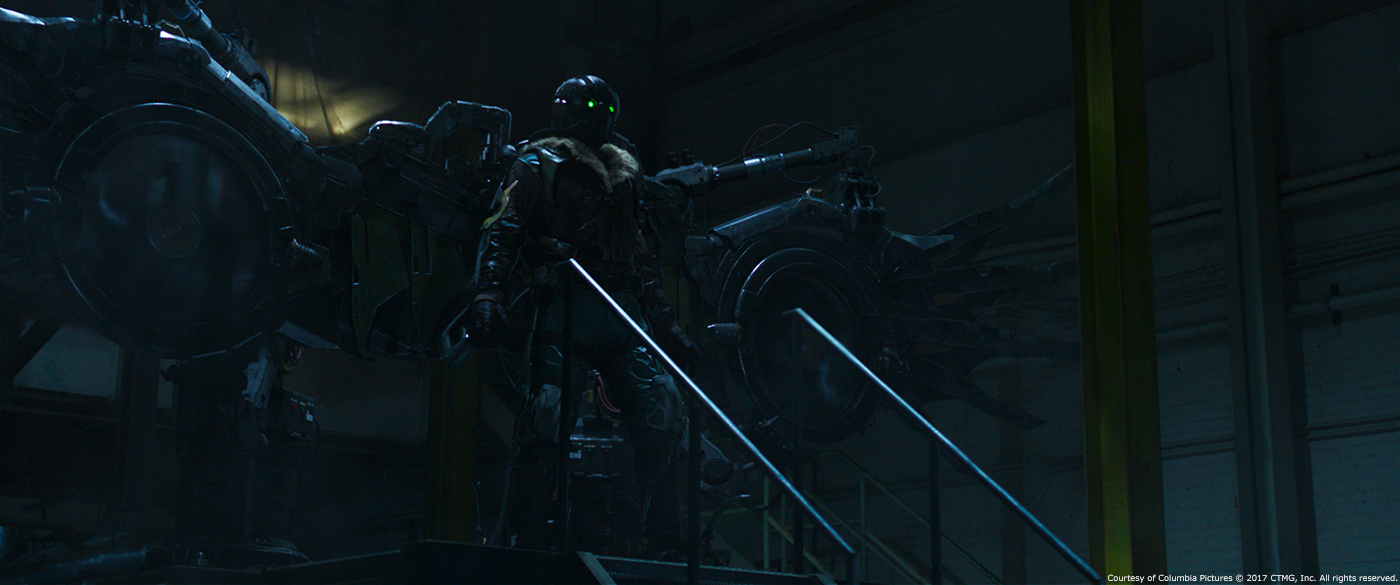Kevin Souls has over 20 years of experience in the visual effects. He worked for many years at Sony Pictures Imageworks on films such as CATS & DOGS, SUPERMAN RETURNS, WATCHMEN, HANCOCK and several SPIDER-MAN.
A few months ago, Brendan Seals explained to us the work of Luma Pictures on ALIEN COVENANT.
What is your background?
Kevin Souls (KS): I started as a Compositor about 20 years ago and moved onto the 3D side on Sam Raimi’s SPIDER MAN 2. After that, I moved to Lookdev, CG Supervision, and recently as an overall Lighter Designer for ALICE IN WONDERLAND 2.
How did you and Luma Pictures get involved on this show?
KS: We had worked with Janek and Di Giorgiutti in the past and they thought we would be a good fit for the character driven Spider-Man Sequences.
What was your feeling to be back in the SPIDER-MAN universe?
KS: Full disclosure: this is was my fourth Spider-Man, so I feel like I never left. Luckily, this one felt fresh. The Marvel approach coupled with Jon Watt’s style was evident from the moment I stepped on set.
How was the collaboration with director Jon Watts and VFX Supervisor Janek Sirrs?
KS: We had a very collaborative relationship with Jon and Janek, which allowed us to really take part in the creative development of the sequences we took part on.
What was their approaches and expectations about the visual effects?
KS: Jon had a strong idea of the tone and character he wanted to portray with this Spider-Man. Janek was clear from day one to forget about what had been done before—he wanted this Spider-Man to feel different. Everything would derive from character, and specifically, Tom Holland as Peter Parker. His acting and sense of humor instructed the design of the action and composition of the shots. In a sense, there was a comedic improvisational feel to the shots.
What are the sequences made by Luma Pictures?
KS: Luma was wholly responsible for about 500 shots on the show. Our work was spread out over several sequences, each with their own look and feel.
The Crime Fighting sequence follows Spider-Man as he pops around the city looking for trouble and it involved one of the longest shots we did on the film: a 45 second single take shot of Peter Parker pulling on a full CG Spidey suit in a filthy alleyway.
Following that, we tackled the ATM fight, a carefully choreographed comical Jackie Chan style cause and effect fight scene in an ATM lobby. It was a mixture of plate and full CG environment, composited with CG Spider-Man, partial green screen baddies and complex alien gun FX work.
Later in the film, in the Suburban Chase sequence, Spider-Man jumps from house to house, street to street, in a mixture of plate and full CG env and alien gun fire, chasing a van full of bad guys. At the end, he is yanked into the sky by the Vulture and pulled high above Queens in full CG shots. His emergency parachute unfurls and he is yanked back to earth wrapped inside of it. Crashing into a lake, he sinks to the bottom surrounded by CG silt and leaves, only to rescued by Ironman. They have a brief conversation on a jungle gym and Spider-Man is left to walk home.
We pick up bad guys in the Vulture Returns sequence, where a frustrated Toomes kills one of his henchman in a grizzly burst of Alien Technology.
In our final sequence, Spider-Man confronts the Vulture on the rooftop of a moving Damage Control truck. Initially intended to be plate photography with CG enhancement, we ultimately reproduced the environment virtually and replaced each plate with full CG to enhance the action and scope of the fight. Each fight move was carefully choreographed to convey the aggression and weight of the Vulture, while never losing the comedic flourishes from Spider-Man.
How did you use your previous experience on the SPIDER-MAN movies for this new one?
KS: It’s a funny question because one the primary goals was to separate this film from the previous one. So in a way, I knew what not to do.
Can you tell us more about the Spider-Man suit?
BS: It was a photo-real replica of the suit that Tom Holland wore on set and in most cases the shading and lighting that we developed for the show was so good that we could just replace the plate Spider-Man without any worry. That opened up some freedom to alter performance, specifically for moments in the ATM sequence, where we could change the start and end of certain poses so that we could add in and augment shots to heighten the action of the sequence.
Can you tell us more about the animation of Vulture in the air?
KS: This was probably the toughest animation task on the show for the simple reason that we did not have any reference or motion capture, it is after all a giant flying mechanical wing-suit. We looked at all types of reference: harrier jets, hover-boards, water jetpacks, flying squirrels. In the end, it all came down to a few driving parameters. The Vulture needed feel heavy, to have weight and momentum and but it also had to hit specific beats and poses to convey the story and emotion of the shot. We would start with blocking poses, to hit the beats, and, once the timing was locked, refine and refine.
Did you received specific indications and references for their animations?
KS: Janek and Jon were adamant from early on that Spider-Man always had to feel like Tom Holland. Tom is a former gymnast and he brought very Buster Keaton physical comedy feel to the performance. To that end, they edited best of reels from outtakes and shot specific performance reference. Once we had a better sense of the edit and flow of the virtual scenes an extensive motion capture session was planned to allow Tom and Jon to dictate the performances in the virtual scenes.
How did you manage the eyes expressions of Spider-Man?
Raphael A. Pimentel (Animation Supervisor): Luma received concept art from Marvel Studios on the eye shapes. Our modellers and riggers then implemented these shapes onto our Spidey rig. As far as animation, you need to be sensible. It is very easy to over animate eyes and it becomes distracting. Tom Holland’s performance drives the eyes and the Luma animation team understood that.
In the beginning we see Spider-Man in various light conditions. How did you manage this aspect?
BS: The lighting team needed to create eight different light rigs to match all the different environments that Spider-Man swings through: the team utilized on set lidar, location captured HDRIs, plate photography and on set reference photography as the foundation. Lighters had to refine on a shot-by-shot basis to craft ‘beauty lighting’ to further enhance and integrate the digital elements into the plates. Throughout execution it was absolutely necessary to achieve a photo-real look for Spider-Man. For example, in the ATM robber sequence, we had created a virtual ATM bank environment in CG, which allowed us to maintain consistency in the way Spider-Man reacted to the interior lighting and no matter where he was within the room and have it match near perfectly to the plate.?
There are lots of aliens weapons during the show. How did you design and created their various FX?
BS: The reference for the gravity gun was based on an effect that was seen briefly in AVENGERS: AGE OF ULTRON — a device on Ultron’s wrist is revealed and enacts a gravitational force. It had a blueish hue with hints of orange and a wispy quality to it. That was given to us as a starting point. Our first goal was to match that and we did some R&D internally to visually match what was done in AGE OF ULTRON. The next challenge was figuring out how to attach that to the gravity gun asset and manipulate it for SPIDER-MAN.
We quickly found that it was an FX design that really warranted being upgraded for the sake of our sequences, because it played it much bigger role than it did in AGE OF ULTRON. There were hero full frame shots, which meant that our initial testing wasn’t going to quite hold up for the ATM sequence. It was basically a particle simulation that’s emitted from the claws of the gravity gun, and we set up goal constraints so that it would start from the gun and target Spider-Man or the bank.
If the gun moved or the target moved, the energy would sway organically with that. The internal brief was for it to always have an atmospheric quality to it, because it had a beautiful spectrum of color. When something is so colourful, it can become dominating, so we wanted to design it in a way where even if it had color it still had transparency and allowed you to read the performances of Spider-Man, flying money and the thieves.
Vulture kills one of his henchman. Can you tell us more about this specific effect?
BS: The challenge of the disintegration effect was staying in line with the tone of the film to not make it too horrifying, even though it was a close up death scene. A few iterations of bulging eyeballs and melting skin led us to the idea that the quicker we turned him into ash and started the disintegration process, the less horrifying it would be. The FX team used an underlying animated and match moved digi double and developed a variety versions of the character to execute the sequence.
Our FX team converted his volume into a fibrous structure so that when we transitioned from a rocky digi double, holes would appear in the rock and erode away, so you get a sense that it would turn from a very thick volume to thin strands of ash. We converted his volume to a mathematical strand volume which made it look other-worldly.
During a chase sequence, Spider-Man is crashing a lot of backyard elements. How did you created these various locations and elements?
KS: The Suburban Chase was a bit of a Swiss army knife of VFX. It started with a pretty extensive night photography shoot shot on location in an Atlanta neighborhood. Whenever possible Spider-Man was shot in the plate, either as the performance or as a reference for lighting. Often, plates would be shot to give flexibility in VFX. For example, each van chase was shot twice: once with a stunt double being dragged behind the van and the other as clean plate with the van driving at twice the speed. It allowed us to switch between plate and full CG Spider-Man in the edit, and to always have perfect reference for lighting.
Once the chase moved into backyards Spider-Man had to overcome with a series of comical obstacles. Sometimes it would be augmentation, like adding additional splashes to the pool, and other times we would completely replace a section of the plate, like the exploding fireplace or the fences and backyard toys he bashes through.
Finally, Spider-Man dashes across roof tops and leaps across the neighborhood to catch the van. To achieve this, drone photography was employed to get smooth and continuous paths over the houses. Several shots required Day for Night treatments to match the existing night shoot, and once the edit was done, it was clear that additional shots would be needed to compliment the story. At this point, we opted to build a set of virtual neighborhood pieces: hi-res rooftops, houses, highly detailed trees, a virtual sky-dome to match the plates, and various obstacles like skylights and satellite dishes for Spider-Man to trip over. In the final assembly, Spider-Man would often run across a plate, leap into a full CG shot, and then leap back to plate.
What was the main challenge on this show and how did you achieve it?
KS: I think the biggest challenge was the growing shot count as show progressed. It forced us to think about efficiencies in pipeline and to bring in new software like Katana to deal with scale. We maintained two lighting pipelines, Maya for the assets that needed flexibility and Katana for the sequences that would require consistency and stability at scale.
What is your favorite shot or sequence and why?
KS: Suburban Chase and Vulture Grab are my favorite because they offered the most varied and complex set of shots. Almost like a string of one-offs.
BS: I love the shots of Vulture entering the warehouse. It was really rewarding to be able to animate and bring to life a fully CG vulture storming into the warehouse, and know that it was introducing the character at the start of the movie. Luma’s sequence introduced the character – so rewarding watching the film and seeing the performance of Michael Keaton and how popular he’s become. really exciting.
What is your best memory on this show?
KS: Standing on a rooftop in Atlanta after a heavy rainstorm at 4am trying to get that last shot, and basically improvising with Jon, Sal the DP, and Janek to get the shot.
BS: Working in the early days of our henchman death scene has to be my best memory. The first few iterations of FX disintegrating Bryce’s character were truly horrific (think empty eye sockets and a jaw falling apart).We and Marvel had a few laughs knowing that it didn’t suit a family-friendly audience.
How long have you worked on this show?
11 months.
What is your VFX shots count?
473.
What was the size of your team?
Approximately 200.
What is your next project?
We are currently working on BLACK PANTHER, THOR: RAGNAROK and A WRINKLE IN TIME.
What are the four movies that gave you the passion for cinema?
KS: A CLOCKWORK ORANGE, 2001, STAR WARS and APOCALYPSE NOW.
A big thanks for your time.
// WANT TO KNOW MORE?
Luma Pictures: Dedicated page about SPIDER-MAN: HOMECOMING on Luma Pictures website.
© Vincent Frei – The Art of VFX – 2017


